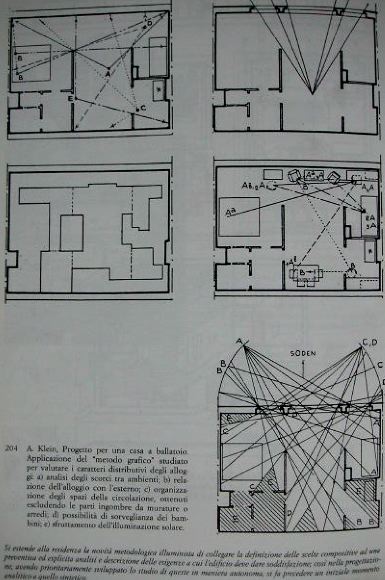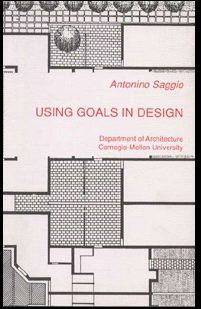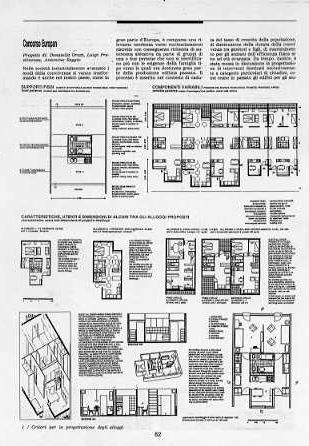Cari amici di Rappresentazione.net, aderisco con piacere al vostro invito per un contributo sulle tematiche che ci sono a cuore. Uso la forma diretta e colloquiale della lettera perché è quella che mi permette il massimo della sinteticità (per cui si dà per inteso che ci si capisca anche su questioni molto specifiche). Ma la forma lettera, mi sembra anche una forma "propria" di comunicazione scientifica quando all'oggettività dei risultati che si vogliono comunicare ai colleghi (e verso i quali siamo e siamo stati fortunatamente educati) vogliamo sostituire la soggettività delle idee: una forma quindi più nebulosa, aperta, incerta ma anche intrensicamente dinamica, e credo, alla fin fine, preziosa.Ora riflettendo un poco a quello che in questi venti anni circa - come non credo sappiate sono un possessore di uno dei primi 10mila Mac costruiti, ho perso il certificato a firma di Steve Jobs, ma è un'onorificenza di cui com'è ovvio anche qui mi pavoneggio - allora dicevo in questi quasi vent'anni di lavoro con i computer a me sembra che un anello che ci accomuna ruota attorno alla parola modello e che giustamente inserite nella vostra home in una accezione che io condivido pienamente.
Questo sito è dedicato ad una concezione ampia del disegno per l’architettura: come insieme di tutti quei modelli, grafici, fisici o informatici che, trasformandosi l’uno nell’altro, convergono verso l’idea progettuale.Ora la parola modello fa subito tremare le vene ad un architetto, anche minimamente colto, e vedo benissimo per un verso, per un altro intuisco, quanto dall'angolo visuale dell'architettura che voi adottate questa parola apra a riflessioni, ricerche, modi di rappresentare lo spazio.Dal mio angolo visuale il centro della parola "modello" si è focalizzato su un intreccio per cosi dire strutturale di tre famiglie di problemi che convergono verso questa parola e verso una sua possibile aggettivizzazione.
La prima area usa il termine modello dal punto di vista concettuale o forse meglio sarebbe dire decisionale intendendolo come infrastruttura, di natura concettuale e teorica, per operare scelte di natura spaziale. Ora per capire anche brevemente questo modo di operare, e trattenendoci per puro rispetto del vostro tempo solo all'ultimo secolo, a me sembrano emergere quattro tipi di modello decisionale.

Il Primo è di natura decisamente oggettiva. Postula, dico postula, dei bisogni oggettivi e trova, dico trova, delle soluzioni oggettive. Esempio? Basta guardare come lavorava Alexander Klein o i tipici funzionalisti tedeschi negli anni Venti. L'uomo aveva dimensioni date, occupava spazi dati e per ciascuna sua funzione si poteva arrivare a una soluzione certa. Il Modello decisionale era chiaramente espresso nell'ambito teorico del Manuale (come quello famosissimo di Neufert) e appena ad un grado decisionale più complesso del Regesto tipologico.
Un matematico architetto dal nome di Alexander non smentisce questo approccio ma lo allarga negli anni Sessanta del Novecento. E' il secondo approccio rilevante secondo me del Modello decisionale. Dicendo, Alexander, eh no attenzione, dobbiamo suddividere e suddividere i requisiti funzionali, "esplicitarli" sino al grado più basso e poi, e solo allora attraverso una struttura a lattice complesso, potremo decidere (e alcuni nostri colleghi e amici credettero che fosse vero e si misero a fare delle schede perforate - ancora viaggiavano da noi in facoltà nei primi anni Settanta - per operare scelte di architettura). Il modello decisionale diventa così Prestazionale.
Un fronte che a me ha sempre interessato come progettista, cioè quando ero trentenne, è stato quello che proponeva un modello decisionale di tipo
Strutturale, o meglio Strutturalista. E mi riferisco ovviamente alla deriva filosofica che parte da Levi-Strauss e non al fatto costruttivo (che lo include semplicemente come sotto categoria). Parlo in particolare di Habraken e del Sar olandese che proponeva per la prima volta coscientemente una "gerarchia delle scelte" alcune che formavano le strutture fisse (come appunto l'antropologia strutturale aveva insegnato nei contesti comportamentali) dall'altro le variazioni delle forme e dei comportamenti "entro" quelle strutture fisse che Habraken chiamava Supports.

progetti di Saggio con altri autori nel corso degli anni Ottanta Dettagli Qui
A guardare adesso a me sembra incredibile come fino alla fine degli anni Ottanta io stesso credessi fermamente in questo modello decisionale (ho scritto molto a proposito, metto qualcosa alla fine assieme a qualche altro riferimento bibliografico). Come tutti sappiamo al modello decisionale oggettivo, al modello decisionale prestazionale, al modello strutturalista si è sostituito oggi il modello diagrammatico. Che cosa è mai il processo decisionale diagrammatico?. Beh si potrebbe dire banalizzando: "è uno schizzo". E invece no! Il modello decisionale diagrammatico non è la prefigurazione di un'idea finale, è la prefigurazione di un processo, è la prefigurazione delle relazioni che intercoreranno nell'architettura a partire da codice dna generatore e regolatore del suo sviluppo. Gli esiti dipenderanno da una serie di accidenti che intervengono come variabili per modificare quel diagramma-codice.
Quale è il grande passo? Il grande passo è che il modello diagrammatico è dinamico, intrinsecamente dinamico. L'arrivo di questa parola fa entrare in gioco due cose: A. Evidentemente l'elettronica e i computer, e B. l'uso dinamico "dei dati". Due cosettine che dette così sembrano pane e mortadella e invece sono due faccende di mostruosa importanza.
A questo punto dobbiamo fermarci con l'uso della prima famiglia dell'uso della parola Modello (come decisionale) e aprire un altro capitolo. Quello dell'uso del termine Modello come modello prettamente scientifico.Se si guarda lo Zingarelli si scopre una cosa veramente divertente. Uno delle primi definizione della parola modello è quello di modello statistico, fisico matematico per interpretare la realtà. Bello il lapsus. La riga appena fatta è scritta "come la ricordavo" uso con il verbo interpretare (con anima indi più critica) ma Zingarelli (ho controllato adesso) non dice interpretare ma dire rappresentare (indi con una vocazione che più avvicina il vostro lavoro) «Modello. Schema teorico elaborato in varie scienze e discipline per rappresentare gli elementi fondamentali di uno o più fenomeni o enti».
Torniamo a noi: la cosa particolare dell'uso del termine Modello come modello scientifico è che questo presuppone equazioni, (ramificazioni di equazioni) con dati fissi e variabili. Bella cosa l'uso del termine Modello in questa accezione. Un modello scientifico è dunque "dinamico" in partenza e per principio.
Naturalmente quando è stato "inventato" lo spreadsheet attorno al 1978, questo mondo è esploso. E' il pensare "What if", è il Prefigurare alcune relazioni per consentire poi al modello di indagarle.
Importante è vedere che cosa è successo e cioè che il punto di arrivo è il medesimo del percorso precedente. Anche il modello scientifico converge verso A. L'elettronica, e B. l'uso dinamico dei dati.Qui avrei desiderio anche di parlare o riparlare del modello Esperto e semantico (che ha a che vedere con l'uso dell'intelligenza artificiale) e sul modello Generativo (che simula dai frattali alla shape grammar algoritmi biotransformazionali) ma mi fermo e lascio stare questi capitoli che sarebbero il terzo e il quarto e neanche tocco quello dei Modelli di rappresentazione che investono lo statuto di ricerca di questo vostro sito. Dei vari modi di intendere la parola modello dal mio punto vista, vorrei finire con l'uso più proprio del termine per un architetto progettista. Cioè il modello spaziale-architettonico. Qui lascio la parola ad un me più giovane e più serioso perché è il caso di capire "veramente bene" quello di cui parlo perché credo che anche dal vostro angolo visuale può essere interessante.
Si tratta di quello che ho chiamato strutture gerarchiche e che caratterizza molti pacchetti applicativi di Computer Aided Architectural Design o di rendering dinamico (come Vectorworks™ o StrataVision™ ma anche molti altri).
Partiamo dalla fine. Se è vero che tutte le concezioni di modello conducono all'elettronica e alla interconnessione dinamica dei dati, questo accade naturalmente anche nel modello spaziale-architettonico? Qui il termine modello ha la potenza di raccogliere "tutti" i sotto utilizzi che abbiamo indicato. Innanzitutto può essere decisionale diagrammatico, avendo come base gli algoritmi sempre più sofisticati dei pacchetti Caad odierni, può incorporare come speciali plug-in moduli esperti o generativi, ma soprattutto incorpora l'uso scientifico del temine modello perché è interconnesso, mutabile. I dati vi sono interrelati secondo l’accezione scientifica del termine modello (matematico, finanziario fisico, statistico). Mi viene ogni tanto da sorridere quando penso che ancora molti dei nostri colleghi pensano che il Caad consenta di essere "come un modello", "come un plastico". Il modello spaziale architettonico informatico di un edificio non è solo una costruzione tridimensionale che permette infiniti punti di vista, ma è proprio un modello mobile, interconnesso, decisionale.
Il centro di questa caratteristica consiste nel fatto che molti programmi Caad consentono la possibilità di avere una struttura gerarchica (di volta in volta chiamata simbolo, tipo, oggetto eccetera) che rappresenta la possibilità di creare quella ragnatela mobile che è il succo della progettazione elettronica.
Cerchiamo di capire meglio. L’organizzazione orizzontale per strati trasparenti (layer) offerta da tutti i Caad è il perfezionamento di una modalità di lavoro tradizionale. Progettare grazie ai layer, pur se con tutti vantaggi di una manipolazione elettronica dei dati, non amplia le possibilità tradizionali, ma le rende solo estremamente più efficienti. Il vero aspetto innovativo avviene quando si prende in esame la struttura verticale (e appunto gerarchica). Si tratta della possibilità di organizzare un progetto attraverso una piramide rovescia che attraverso combinazioni in insiemi via via più complessi degli elementi determina un ambiente di progettazione estremamente flessibile con relazioni dinamiche tra i dati. Le possibilità della simulazione in questi ambienti può affrontare contemporaneamente l’organizzazione spaziale e costruttiva, funzionale e formale, quantitativa e economica. Un progetto rappresentato in un modello elettronico consente di avere delle relazioni dinamiche tra i dati che descrivono su tre dimensioni un progetto per cui, al variare di alcuni, ne variano di conseguenza altri a loro connessi. Le possibilità della simulazione in questi ambienti affronta di conseguenza l’organizzazione spaziale e costruttiva, funzionale e formale (e non solamente quantitativa) del progetto.

Il punto di arrivo è dunque analogo. Si tratta di muoversi in un'idea di modello intrinsecamente dinamico dei dati consentito solo dall'elettronica. Si va bene, si dirà, ma per fare che architettura? Ma per fare una architettura "a sua immagine e somiglianza" è la risposta.
In questo sforzo questa direzione si dovrebbe lo sforzo della serie di libri "La Rivoluzione Informatica" che è ormai giunta anch'essa come il mio Mac, al ventesimo volume.
Mi auguro che tra un poco diventi più chiaro che questo è un lavoro collettivo, e che è stato compiuto per far muovere l'architettura verso la "coscienza" della centralità delle informazioni. E con franchezza ci stiamo quasi riuscendo.A presto cari amici e buon lavoro anche insieme.
Nino Saggio
